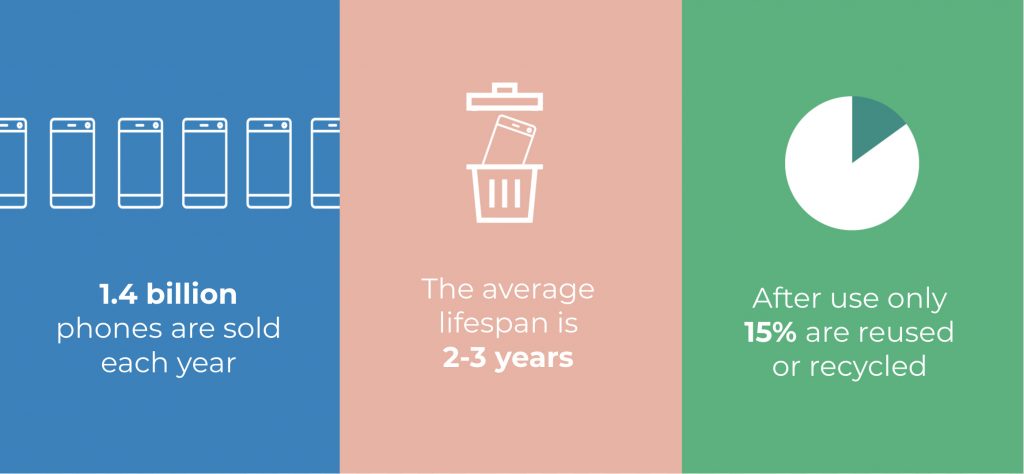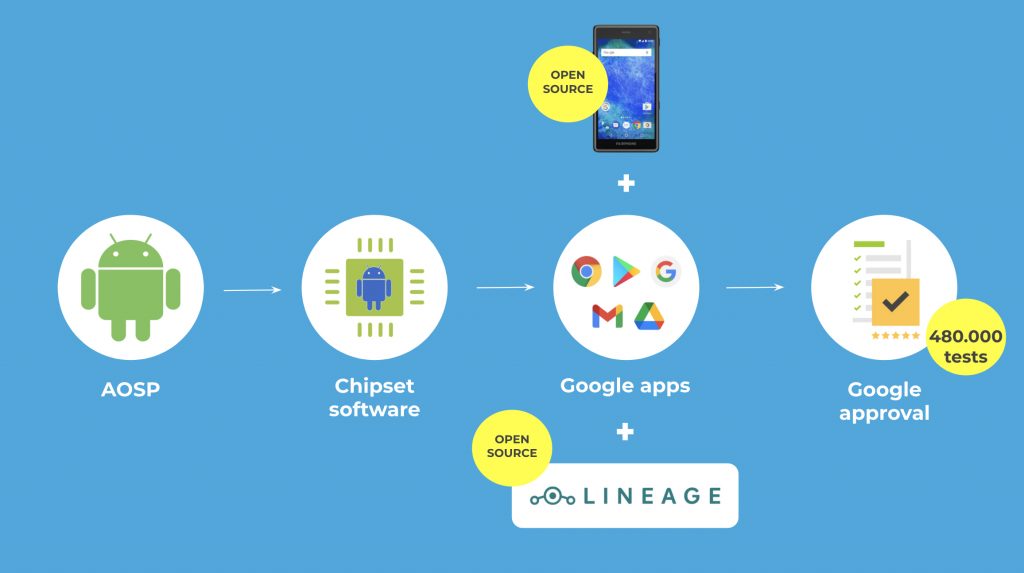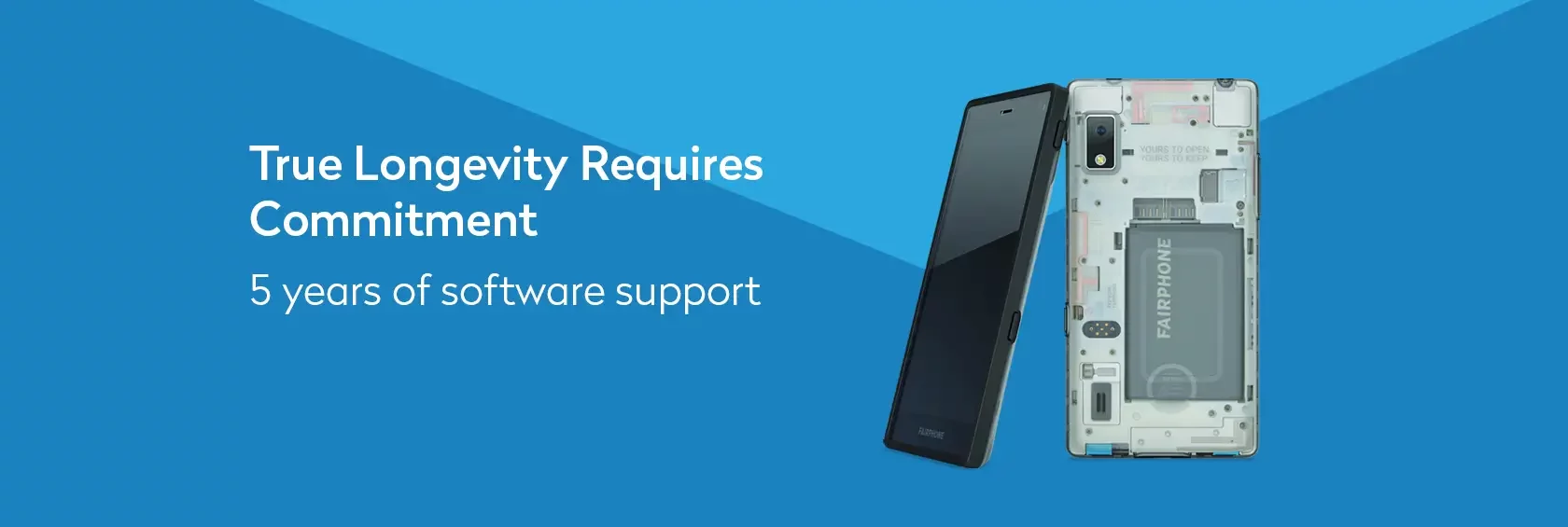Redefining longevity: Android 9 now available for Fairphone 2
UPDATE: In March 2022 the Fairphone 2 received an upgrade to Android 10 – another industry first. Check out the video >>
It all started with a spark of inspired optimism: We can change the electronics industry for the better, by becoming a part of it. Setting new standards and reshaping an entire industry was going to take serious, long-term commitment.
This year is a milestone for us, and you, as it marks 5 years of continuous support of the Fairphone 2. It is also one of the few Android smartphones sold in that year (2015), to still receive continued software support. It might not seem like a big deal, but trust us, it is. This is the only smartphone to receive an upgrade to Android 9 and we had to build the operating system without any support from chip-maker Qualcomm.
Out with the old, in with the new?
According to market research firm Kantar Worldpanel users in Europe kept their phones for an average of 2-3 years in 2018. Our ambition is to provide you phones that last a minimum of 5 years. The reason is simple: the longer you keep your phone, the lower its environmental footprint. This constant push for the latest device means that over one billion mobile phones are sold worldwide every year. That also means more discarded phones. While only 20% of these discarded phones are recycled, it’s no surprise that electronic waste (e-waste) has become the world’s fastest-growing waste stream.

We started Fairphone with a mission: to encourage smartphone longevity by disrupting the electronics industry from the inside. We know that fairness is possible, but it will take the broader industry jumping on the bandwagon, taking responsibility and driving as well as demanding change. At Fairphone, we strive to make the most of the materials used in our products. We’re moving closer to a circular economy by using materials from more responsible sources, emphasizing reuse and recycling, and designing our phones to last as long as possible. This birthday signifies our commitment to you and to our supply chain.
Why the Fairphone 2 just works
The FP2 was the first modular phone. It was a revolutionary concept for the electronics sector that hadn’t been done before. However, producing the first modular phone presented new challenges in the supply chain. While the modular design enables users to easily repair their phones with spare parts, thus extending its lifespan, the availability of those parts becomes crucial. In fact, recently we ran out of stock of the bottom modules due to this very issue. Understanding this aspect was key and we had to continuously tweak our process, jumping over hurdles to make sure we had enough spare parts available, even once production of the phone ended.

Aside from spare part challenges, we bumped up against the goliath: software updates. In the past, we had to keep working with chipsets that no longer support the latest software. But against all odds — with the help of so many dedicated community members — we persisted, overcame these challenges and were able to provide FP2 users with software updates. We effectively use a DIY style to keep the FP2 going strong, enabling people to increase their phone’s longevity.
Who’s counting?
To get to where we are today, we had to go through approximately 477,000 Google tests and pass them all in order to get the certification. That’s a huge achievement for us. Not that we were counting. Ok, we were. Wouldn’t you?
So in proper fashion, we are celebrating the 5th birthday of the Fairphone 2 by baking a cake, eating it, and then getting back to work ensuring fairness is present across the electronic, mining, and recycling industries. Not to mention the continued software support for our phones. It’s a big job but somebody has to do it, and we don’t mind being front-runners. As long as the rest of the electronic industry follows along.
The Android 9 roll-out starts today, March 25th, and will continue until April 18th. Since this is such a significant step for us, we want to ensure the update goes smoothly. This staged roll-out helps us monitor the release deployment and react more efficiently, in case of any hiccups.



